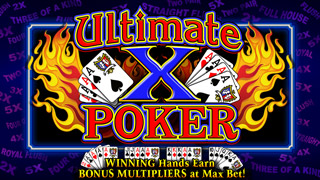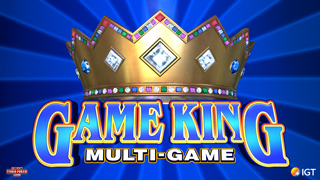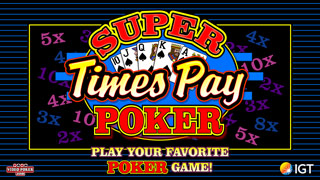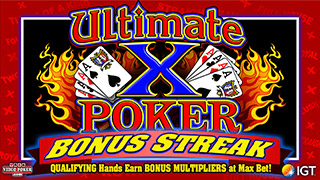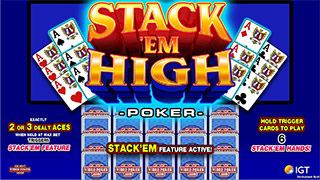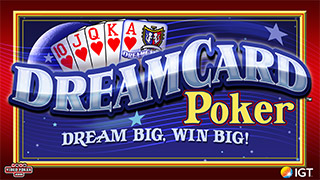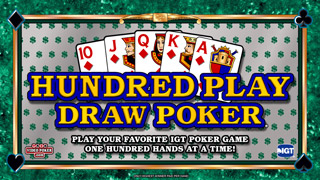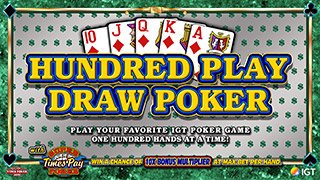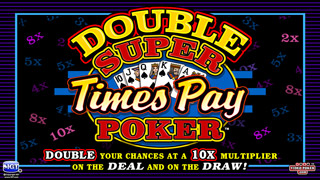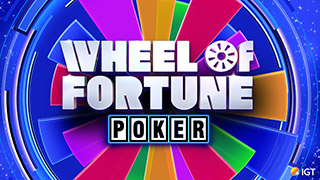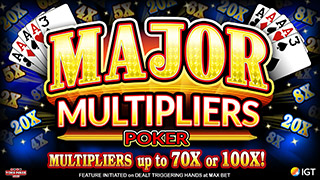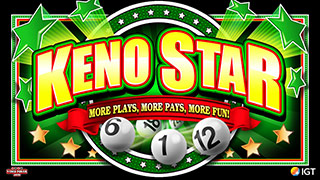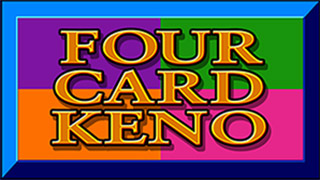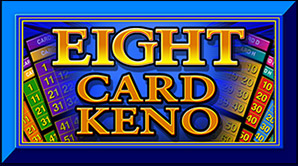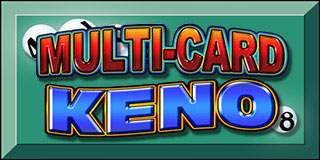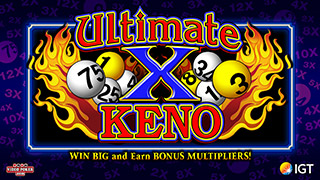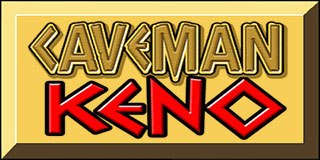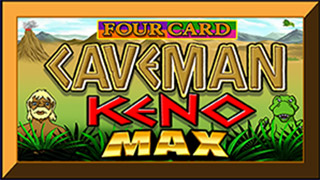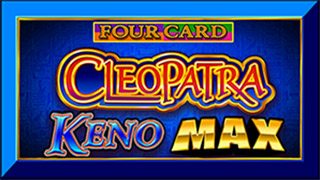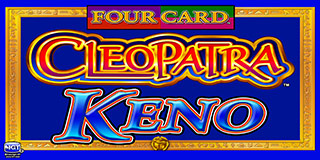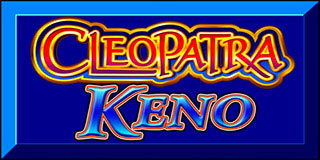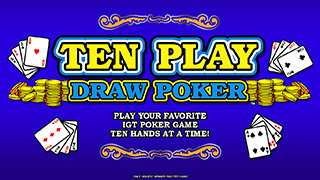risk of ruin comments
-
jim18
- Senior Member
- Posts: 118
- Joined: Fri Mar 04, 2011 9:55 am
risk of ruin comments
People that post on twiter are limited to 140 characters. Posters on here are encouraged to post short messages. For the life of me, I can’t do this, and at the same time make several points. Then try to explain why I am thinking a certain way. Anyway, I will try to keep this post to no more than 140 sentences.1. What I would like to recommend is that on the Video Poker screen for each game that the manufacturer be required to display the risk of ruin for all the games that are available on that machine.2. Furthermore, I am asking that this website, VideoPoker.com, compile the risk of ruin statistics for each game that it offers. If a website is willing to show us the pay back percentages for each version of every game, then why not show us something that I suspect is far more useful.For a long time I have thought that there must be more to video poker than looking for the best pay tables, and learning the strategy for a game. Now and then players do make reference to such things as volatility or bankroll size, as a part of the gaming strategy.Take a look at the game DREAM CARD for instance. If you play a single line JOB version of dream card, and if you are playing the 9/6 pay table, your expected return is 99.5%. On the surface it looks like these two games are almost identical since you are playing the same game (JOB), and your expected return in both games is 99.5.Breaking the game down, what I see is that in the DREAM CARD version of the game I can win 4,000 credits, but I have to bet 10 credits to do so. Why do I want to bet 10 credits to hit a RF for 4,000 coins, when on the basic JOB game I only have to bet 5 credits to win the same prize?If that detail does not bother you then consider this. JOB is the least volatile game there is. What did I do to the volatility of the game by betting twice as much in the DREAM CARD version per hand, and winning no greater amount for doing so?According to what I have read when you bet an extra credit to play STP, or to play Quick Quads, you find out that the return on the game goes up. Maybe it rises .25% for all games on STP. Maybe it rises different amounts depending which game you select on QQ. Now, where is the increased return in DREAM CARD after betting twice as much as in the basic game?Experts will say that in DREAM CARD you will hit more 4OAKs and more Rfs. On the other hand I could have played two hands at the same denomination, in the basic version, without risking more money. Or I could have increased the denomination and won a larger payoff than would occur with a hit on DREAM CARD.My risk of ruin has increased a lot by playing DREAM CARD, yet to the unsuspecting player each game returns the same 99.5%. Experts over and over say to play the game with the best pay table. Is that really the best and only advice to give the rest of us?My theory is this. Each game from JOB to TDB has a different volatility to it. Aside from that each game that requires additional credits has increased risk of ruin. How does a player compare the risk of ruin in playing JOB - DREAM CARD to TDB without dream card? (Or any other game)Software is available, and some people on this site can easily calculated the risk of ruin of any game. Shouldn’t everyone have the same information?Some websites go to great lengths to display the results for various pay tables, including what value each hand contributes to the overall return of the game. Is that information nearly as useful to a player as knowing the risk of ruin for each game?
-
BillyJoe
- Video Poker Master
- Posts: 3198
- Joined: Sat Aug 23, 2008 2:00 pm
1. What I would like to recommend is that on the Video Poker screen for each game that the manufacturer be required to display the risk of ruin for all the games that are available on that machine.
2. Furthermore, I am asking that this website, VideoPoker.com, compile the risk of ruin statistics for each game that it offers. If a website is willing to show us the pay back percentages for each version of every game, then why not show us something that I suspect is far more useful.
For a long time I have thought that there must be more to video poker than looking for the best pay tables, and learning the strategy for a game. Now and then players do make reference to such things as volatility or bankroll size, as a part of the gaming strategy.
Take a look at the game DREAM CARD for instance. If you play a single line JOB version of dream card, and if you are playing the 9/6 pay table, your expected return is 99.5%. On the surface it looks like these two games are almost identical since you are playing the same game (JOB), and your expected return in both games is 99.5.
Breaking the game down, what I see is that in the DREAM CARD version of the game I can win 4,000 credits, but I have to bet 10 credits to do so. Why do I want to bet 10 credits to hit a RF for 4,000 coins, when on the basic JOB game I only have to bet 5 credits to win the same prize?
If that detail does not bother you then consider this. JOB is the least volatile game there is. What did I do to the volatility of the game by betting twice as much in the DREAM CARD version per hand, and winning no greater amount for doing so?
According to what I have read when you bet an extra credit to play STP, or to play Quick Quads, you find out that the return on the game goes up. Maybe it rises .25% for all games on STP. Maybe it rises different amounts depending which game you select on QQ. Now, where is the increased return in DREAM CARD after betting twice as much as in the basic game?
Experts will say that in DREAM CARD you will hit more 4OAKs and more Rfs. On the other hand I could have played two hands at the same denomination, in the basic version, without risking more money. Or I could have increased the denomination and won a larger payoff than would occur with a hit on DREAM CARD.
My risk of ruin has increased a lot by playing DREAM CARD, yet to the unsuspecting player each game returns the same 99.5%. Experts over and over say to play the game with the best pay table. Is that really the best and only advice to give the rest of us?
My theory is this. Each game from JOB to TDB has a different volatility to it. Aside from that each game that requires additional credits has increased risk of ruin. How does a player compare the risk of ruin in playing JOB - DREAM CARD to TDB without dream card? (Or any other game)
Software is available, and some people on this site can easily calculated the risk of ruin of any game. Shouldn’t everyone have the same information?
Some websites go to great lengths to display the results for various pay tables, including what value each hand contributes to the overall return of the game. Is that information nearly as useful to a player as knowing the risk of ruin for each game?
Jim, to your first point, posting a risk of ruin would not benefit many folks, since they will not have a clue what that means. A stat there is only meaningful anyway if you play PERFECT strategy.
To your point on DreamCard, I posted a pic from my Harrahs Joliet trip. It was nice having that 5th card be the DreamCard, after being dealt four to the royal on the first four.
-
Vman96
- Video Poker Master
- Posts: 3298
- Joined: Tue Jul 26, 2011 12:49 am
Well, first things first, if you insist on machines freely giving information out, I would first start with mandating they clearly state the optimal payback for each game. Then the variance (or standard deviation) of the game since payback and variance are key variables that help compute a "risk of ruin" calculation.
One problem with risk of ruin is that it requires multiple variables, some of which vary among individual choice. If we're talking about an unlimited timeframe, then for many video poker machines, the risk of ruin is 100%. If we talk about playing a maximum 50 hands, and your bankroll is 100 max bets, your risk of ruin is 0% in this case. See the problem? Risk of ruin also depends on initial bankroll and maximum number of hands played. So to combat this, you would either need to create a risk of ruin calculator on the machine that 99%+ of players won't care to notice or even know how to use, or, pick a few base statistics to base all risk of ruin calculations off.
Like on a quarter unit, the game could list the risk of ruin for the following:
$50 for 500 hands
$50 for 1000 hands
$100 for 500 hands
$100 for 1000 hands
$100 for 2000 hands
$200 for 500 hands
$200 for 1000 hands
$200 for 2000 hands
The whole JoB to JoB Dream Card argument doesn't bother me that much because although your payouts have not increased, your probabilities of making higher paying hands has. So this makes up for the price you are paying for the Dream Card. But when higher paying hands become more frequent, this also means the variance, and the risk of ruin, goes up. Variance data found from here: http://wizardofodds.com/games/video-poker/analyzer/ The variance of 9/6 quarter JoB is 19.514676 betting units. The variance of 9/6 quarter JoB dreamcard is 22.54446 betting units. The standard deviation is the square root of variance which is 4.417541 for regular 9/6 JoB and 4.7481 betting units for 9/6 JoB w/DreamCard. But the betting unit is also double in DreamCard. So the standard deviation in terms of dollars is 4.417541 x $1.25 = $5.522/hand for JoB and 4.7481 x $2.50 = $11.87/hand for DreamCard.
Standard deviation scales by the square root of hands played so for any given 100 hands, we would expect the standard deviation (SD) to look like this:
JoB SD: $55.22/100 hands
DreamCard SD: $118.70/100 hands
The SD measures the amount of "swing" in your results over a given time period. 95% of the time results will fall within 2 SDs, which in this case are:
JoB 2SD: $110.44/100 hands
DreamCard SD: $237.40/100 hands
With these results in mind we would expect the RoR for the DreamCard game to increase significantly for the same amount of bankroll. Unfortunately, to get the exact answer, you need to run a computer simulation for that.
And billyjoe brought up a good point I didn't make in this initial ramble. Risk of ruin calculations are generally based on optimal play. Errors will always increase your risk of ruin, and that's another thing not easily quantified.
One problem with risk of ruin is that it requires multiple variables, some of which vary among individual choice. If we're talking about an unlimited timeframe, then for many video poker machines, the risk of ruin is 100%. If we talk about playing a maximum 50 hands, and your bankroll is 100 max bets, your risk of ruin is 0% in this case. See the problem? Risk of ruin also depends on initial bankroll and maximum number of hands played. So to combat this, you would either need to create a risk of ruin calculator on the machine that 99%+ of players won't care to notice or even know how to use, or, pick a few base statistics to base all risk of ruin calculations off.
Like on a quarter unit, the game could list the risk of ruin for the following:
$50 for 500 hands
$50 for 1000 hands
$100 for 500 hands
$100 for 1000 hands
$100 for 2000 hands
$200 for 500 hands
$200 for 1000 hands
$200 for 2000 hands
The whole JoB to JoB Dream Card argument doesn't bother me that much because although your payouts have not increased, your probabilities of making higher paying hands has. So this makes up for the price you are paying for the Dream Card. But when higher paying hands become more frequent, this also means the variance, and the risk of ruin, goes up. Variance data found from here: http://wizardofodds.com/games/video-poker/analyzer/ The variance of 9/6 quarter JoB is 19.514676 betting units. The variance of 9/6 quarter JoB dreamcard is 22.54446 betting units. The standard deviation is the square root of variance which is 4.417541 for regular 9/6 JoB and 4.7481 betting units for 9/6 JoB w/DreamCard. But the betting unit is also double in DreamCard. So the standard deviation in terms of dollars is 4.417541 x $1.25 = $5.522/hand for JoB and 4.7481 x $2.50 = $11.87/hand for DreamCard.
Standard deviation scales by the square root of hands played so for any given 100 hands, we would expect the standard deviation (SD) to look like this:
JoB SD: $55.22/100 hands
DreamCard SD: $118.70/100 hands
The SD measures the amount of "swing" in your results over a given time period. 95% of the time results will fall within 2 SDs, which in this case are:
JoB 2SD: $110.44/100 hands
DreamCard SD: $237.40/100 hands
With these results in mind we would expect the RoR for the DreamCard game to increase significantly for the same amount of bankroll. Unfortunately, to get the exact answer, you need to run a computer simulation for that.
And billyjoe brought up a good point I didn't make in this initial ramble. Risk of ruin calculations are generally based on optimal play. Errors will always increase your risk of ruin, and that's another thing not easily quantified.
-
FloridaPhil
- Video Poker Master
- Posts: 6229
- Joined: Sat Jul 19, 2008 11:28 am
If you play video poker the way I do your "Risk of Ruin" is 100%...
-
jim18
- Senior Member
- Posts: 118
- Joined: Fri Mar 04, 2011 9:55 am
My thanks to both of you for your posts. I can agree that risk of ruin calculations might not be interesting to many gamblers. However, I still suspect that if a person where to know the risk of ruin of a particular game, that such a person might then make an informed decision to play that game or not. Just as a person might read a pay table and choose not to play a game due to a lower than normal pay back percent.Why does McDonald’s display calorie numbers on its menu? Letting people know what their menu decision is, in terms of calories might not change their decision. But not allowing them to know this information is simply wrong.My current opinion is that there is a difference between how volatile a game is, and what is its risk of ruin. For now it is just an opinion.Somewhere, I read about the difference in volatility between games. In my mind the purpose is to show in relative terms, not some absolute answer, but just a comparison of which games require more of a bankroll.In order to make such a chart for a website certain assumptions have to be made. But if the assumptions are applied to all games, then I think in relative terms, the comparisons would have meaning. Yes, playing without error does effect risk of ruin. When a percentage is posted on Wizard of Odds for a pay table, is it not based on the assumption that a player is playing perfectly. Assumptions are already being made in video poker statics.Perhaps it is the case that the extra bet required to take advantage of a bonus feature, like is found in STP or Dream Card has only a small impact on the volality of the game. Or on the risk of ruin. This is a detail that I hoped to have answered by others.Based on the example mentioned by Vman96 it appears that betting twice as much to win the same amount of prize has an impact on volality. However, the rate of return of JOB in Dream Card and in standard versions is 99.5%. Where is the advantage of being forced to bet twice as much per hand in Dream Card just to get the same return as in regular JOB? Does the player who plays Dream Card need to have twice the size of bankroll as he would have if playing regular JOB? I sort of get that from his posting.Imagine for an instance that you are playing Dream Card, JOB, thinking that you are playing a low volality game, only to find out that the game you are playing is as volatile as DDB. Is it really necessary to keep this information from the public just because most players don’t care about its meaning?I agree that there is a good feeling to being dealt four to a RF, plus the fifth card to a RF from a dream card. What bothers me is that I had to pay 10 credits to win 4,000, rather than pay 5 credits. Somehow that sounds less rewarding.In my original post, I asked if it would not be better for me to take the extra 5 credits and play a second hand. Or to increase the denomination of my credits. Certainly a higher denomination per credit would mean more money for me when I hit. And playing two hands at a time, rather than one hand at a time might double my chances of hitting a big win. Yes, Dream Card is a fun game to play, but it seems to do nothing to improve the rate of return for the game over the standard game. On the other hand games like Quick Quads and STP increase the return on the pay schedule. Are these games not also fun to play, while returning a higher pay back?Finally, do the people on this site that play with the expectation of wining money play the fancy games like Dream Card or do they play other games. They have made the calculations and they know what is the best games to play, not based solely on pay table, but on other factors too. I think the ordinary player should be just as informed about this, as the experts/professionals are.
-
BillyJoe
- Video Poker Master
- Posts: 3198
- Joined: Sat Aug 23, 2008 2:00 pm
Jim, although I may play at a higher denom than many people, I play for recreation. I clearly understand that the casino has the advantage in ALL games, so being entertained is important to me, along with the comps that I receive. I recognize that increased volatility games require a larger bankroll. I also set win/loss stops for myself to help me manage that bankroll.
I live in a non-casino state (FLA), and travel for any gaming that I do. As such, I feel it is pointless to grind out precise figures on any game that I play, since I do not play enough hands for the math to tell me anything.
Playing JOB only would bore me to tears.
I live in a non-casino state (FLA), and travel for any gaming that I do. As such, I feel it is pointless to grind out precise figures on any game that I play, since I do not play enough hands for the math to tell me anything.
Playing JOB only would bore me to tears.
-
Tedlark
- Video Poker Master
- Posts: 8644
- Joined: Mon Oct 02, 2006 12:29 am
billyjoe I thought the INDIANS have casino operations in Fla?
-
Minn. Fatz
- VP Veteran
- Posts: 524
- Joined: Mon May 07, 2007 12:22 am
Short answer: if the expected return of the game/games you are playing is less than 100 percent, your risk of ruin is 100 percent. Given enough time, you will exhaust any size bankroll playing negative return games. That covers nearly every VP game in any casino I've been in.
If the game/games you're playing has some positive return, a rule of thumb is you should bankroll 3000 bets. That will probably be higher for games with higher variance than full-pay DW. Mathematically, your risk of ruin depends on the expected return and variance of the game you're playing and the size of your bankroll. To calculate a bankroll in bets for a given risk of ruin:
B = [Var * ln(p)] / (-2 * R)
where:
B is bankroll, in bets
Var is variance
p is expected return; ln(p) is its natural logarithm
R is risk of ruin
(The Wizard of Odds site features a strategy calculator that shows probabilities for each paying hand, which can be used to calculate variance. Most VP software will calculate variance given a game's paytable.)
As you note, the effect of most of the new VP games is to increase return slightly while increasing variance significantly. It's fairly clear from the formula above that that means you'll need a larger bankroll for the same risk of ruin.
Good questions. Good Mathematics!
If the game/games you're playing has some positive return, a rule of thumb is you should bankroll 3000 bets. That will probably be higher for games with higher variance than full-pay DW. Mathematically, your risk of ruin depends on the expected return and variance of the game you're playing and the size of your bankroll. To calculate a bankroll in bets for a given risk of ruin:
B = [Var * ln(p)] / (-2 * R)
where:
B is bankroll, in bets
Var is variance
p is expected return; ln(p) is its natural logarithm
R is risk of ruin
(The Wizard of Odds site features a strategy calculator that shows probabilities for each paying hand, which can be used to calculate variance. Most VP software will calculate variance given a game's paytable.)
As you note, the effect of most of the new VP games is to increase return slightly while increasing variance significantly. It's fairly clear from the formula above that that means you'll need a larger bankroll for the same risk of ruin.
Good questions. Good Mathematics!
-
Vman96
- Video Poker Master
- Posts: 3298
- Joined: Tue Jul 26, 2011 12:49 am
My thanks to both of you for your posts. I can agree that risk of ruin calculations might not be interesting to many gamblers. However, I still suspect that if a person where to know the risk of ruin of a particular game, that such a person might then make an informed decision to play that game or not.
Oh it's definitely possible. But those who really care enough should also be able to stumble across wizardofodds.com or a place like this to help them more clearly understand. Hell, US casinos don't force slot manufacturers to publish paybacks on slots either. There are many things I feel like casinos should disclose before things like risk of ruin.
The thing you seem to be neglecting about DreamCard is, those extra credits helps you make big hands much much easier! Royal flushes become 4 times more frequent now in JoB! And as far as the return changing hardly at all, that really depends on the game. 98.91% Deuces Wild becomes 99.91% with the DreamCard feature; although I'm not aware of this game being available in any casino.
And STP adds a decent amount of variance too, but not as much as DreamCard. Now Double STP, that might be swingier than DreamCard. The nice thing about STP is, you know what the return boost generally is (~0.28% for STP and ~0.50% for Double STP).
Most people that seriously try to win when playing video poker are playing "gimmick games" less because the highest returns available are usually lower than the basic one line games.
For example, these are the best games I have read on VPFree2.com or seen in person that have gimmicks (many of these are in Vegas only).
Ultimate X: 9/6 DDB (10-line) (99.87%)
STP: 9/6 JoB (99.82%)
DSTP: 8/5 Bonus (99.67%)
DreamCard: 9/6 Bonus Deluxe (99.67%)
Quick Quads: 9/6 DDB (99.65%)
In Vegas, if you go offstrip, 100%+ machines are still available. But the "experts" will play any game or setup that's profitable in the end (and that includes factoring in comps). As for me, I'm too poor right now to be an "expert", but I'm interested in the numbers of the game nonetheless.
. To calculate a bankroll in bets for a given risk of ruin:
B = [Var * ln(p)] / (-2 * R)
where:
B is bankroll, in bets
Var is variance
p is expected return; ln(p) is its natural logarithm
R is risk of ruin
Yeah, this is a good start if you are playing positive games for the infinite time frame. Unfortunately, many players would rather have a session RoR number. Also this estimate isn't that well suited for video poker because payouts are very skewed, but it at least errs on the side of being conservative. A better formula can be found here:
http://blackjackforumonline.com/content/VPRoR.htm
Oh it's definitely possible. But those who really care enough should also be able to stumble across wizardofodds.com or a place like this to help them more clearly understand. Hell, US casinos don't force slot manufacturers to publish paybacks on slots either. There are many things I feel like casinos should disclose before things like risk of ruin.
The thing you seem to be neglecting about DreamCard is, those extra credits helps you make big hands much much easier! Royal flushes become 4 times more frequent now in JoB! And as far as the return changing hardly at all, that really depends on the game. 98.91% Deuces Wild becomes 99.91% with the DreamCard feature; although I'm not aware of this game being available in any casino.
And STP adds a decent amount of variance too, but not as much as DreamCard. Now Double STP, that might be swingier than DreamCard. The nice thing about STP is, you know what the return boost generally is (~0.28% for STP and ~0.50% for Double STP).
Most people that seriously try to win when playing video poker are playing "gimmick games" less because the highest returns available are usually lower than the basic one line games.
For example, these are the best games I have read on VPFree2.com or seen in person that have gimmicks (many of these are in Vegas only).
Ultimate X: 9/6 DDB (10-line) (99.87%)
STP: 9/6 JoB (99.82%)
DSTP: 8/5 Bonus (99.67%)
DreamCard: 9/6 Bonus Deluxe (99.67%)
Quick Quads: 9/6 DDB (99.65%)
In Vegas, if you go offstrip, 100%+ machines are still available. But the "experts" will play any game or setup that's profitable in the end (and that includes factoring in comps). As for me, I'm too poor right now to be an "expert", but I'm interested in the numbers of the game nonetheless.
. To calculate a bankroll in bets for a given risk of ruin:
B = [Var * ln(p)] / (-2 * R)
where:
B is bankroll, in bets
Var is variance
p is expected return; ln(p) is its natural logarithm
R is risk of ruin
Yeah, this is a good start if you are playing positive games for the infinite time frame. Unfortunately, many players would rather have a session RoR number. Also this estimate isn't that well suited for video poker because payouts are very skewed, but it at least errs on the side of being conservative. A better formula can be found here:
http://blackjackforumonline.com/content/VPRoR.htm
-
jim18
- Senior Member
- Posts: 118
- Joined: Fri Mar 04, 2011 9:55 am
Let me begin my response to the three of you by thanking each of you for taking the time to explain some things to me. I am trying to learn about video poker without getting too deep into certain areas, such as math. I am disappointed that many other people viewed our postings, yet did not find the topic worth their input.To Billyjoe’s post: I understand your point of view. It is a reasonable position to have. Still, it is a matter of choice and financial situation that you choose to play as you do. I m not trying to take away your gambling pleasure. I am only asking that more information be available to those who choose to consider the volatility of a game and the size of their bankroll.Just look at all the details that are available for Dream Card at the Wizard of Odds site. Most of the information contained in charts is what I would call “over communication”. I do not fully understand what I am reading there. Worst still, is that I do not know how to use the provided information to make reasonable conclusions. Wizard of Odds seems to provide a boat load of statistics, but not enough conclusions.To Minn.fatz. Of course the expected risk of ruin is 100% when you are playing games that return less than 100%. In my mind, I was making an assumption that the game manufacturer would state in supplying useful stats to the player. For example, assumptions might include bankroll size, maximum coins bet, perfect playing strategy, and a session length.If the same variables were to be applied to all games, is it not fair to say that the player could then pick their risk of ruin in relative terms? If Wizard of Odds can calculate that playing three hands is 30% more volatile than playing one hand, then we are talking in relative terms already. So, if I play Dream Card - Spin Poker with 9 active lines, and I am playing Double Bonus Poker version, then using a single hand of the least volatile game without any extra features, a person can say that their volatility has increased lets say 100% by playing DBP over the baseline (JOB), then their volatility has increased an additional 70% by playing 9 hands over playing one hand, then their volatility has increased 100% by betting 10 credits per hand over the normal maximum of 5 credits per hand. I have no idea if the above numbers are right. Certainly, I have no idea if the numbers are added together, or multiplied. On top of that I still have to add in my skill level for that particular game, then add in the number of credits available for the selected denomination. No one is going to do this. It is just too much work.To Vman96. As I stated in my first posting, I am aware of the site called Wizard of Odds. It is a good place to visit and learn from. Still, what I read there does not flow smoothly into my mind and allow me to make conclusions as to what is really going on with some topics. Here is an example.There are some figures on the likelihood of getting a RF with and without Dream Card. Also, there are fugues on getting 4OAK. Yes, there are big improvements in hitting a RF or 4OAK if playing Dream Card over the standard version of JOB. On the other side of the equation, in more than 50 % of the time the hand produces no winning combination. I can not extrapolate from the charts how important this is. The Wizard of Odds needs to include more comments along with the charts.It is your opinion that the casino should disclose many things, which are more important than risk of ruin. I can not dispute this. I have no idea what your expectations are. Right now casinos do not disclose the pay back percentage for each pay table of each game in their casino. Still, that information is disclosed to you and I through such sites as Wizard of Odds. People go to these sites for information. Maybe Wizard of Odds could be a source of information on the topic of risk of ruin as well. They know what factors are needed and how to combine them in some useful way. The average player does not.Yes, I agree with you that the return does improve for some games, while not improving for JOB. I used JOB in my original posting for two reasons. One. It supports my concern that Dream Card adds nothing to the return of the game. Two, and more importantly, when you consider JOB as such a low volatile game, the player is being set up. Playing JOB with 9 hands, with a lousy pay schedule, with Dream Card extra bets produces a game that might be fun or entertaining, but may also be more bankroll demanding that TDB at a higher denomination, with a better pay schedule and less coins wagered per bet.And, again I can agree with you that you can find great pay tables somewhere in America, if you are willing to play for a certain denomination. I can find a 25 cent DW game that is single line with a pay table over 99%. The problem is that just as Billyjoe would be bored over JOB, I would be bored over playing a single hand of DW.I am happy playing games with a return over 99%. The question is what impact does a “gimmick game” have on my bank roll/risk of ruin. There needs to be balance between games that are fun to play, exciting to play, and games that have a high return without a heavy demand on the bankroll. It is my hope that a comparison of risk of ruin between games might allow me to make this decision.



